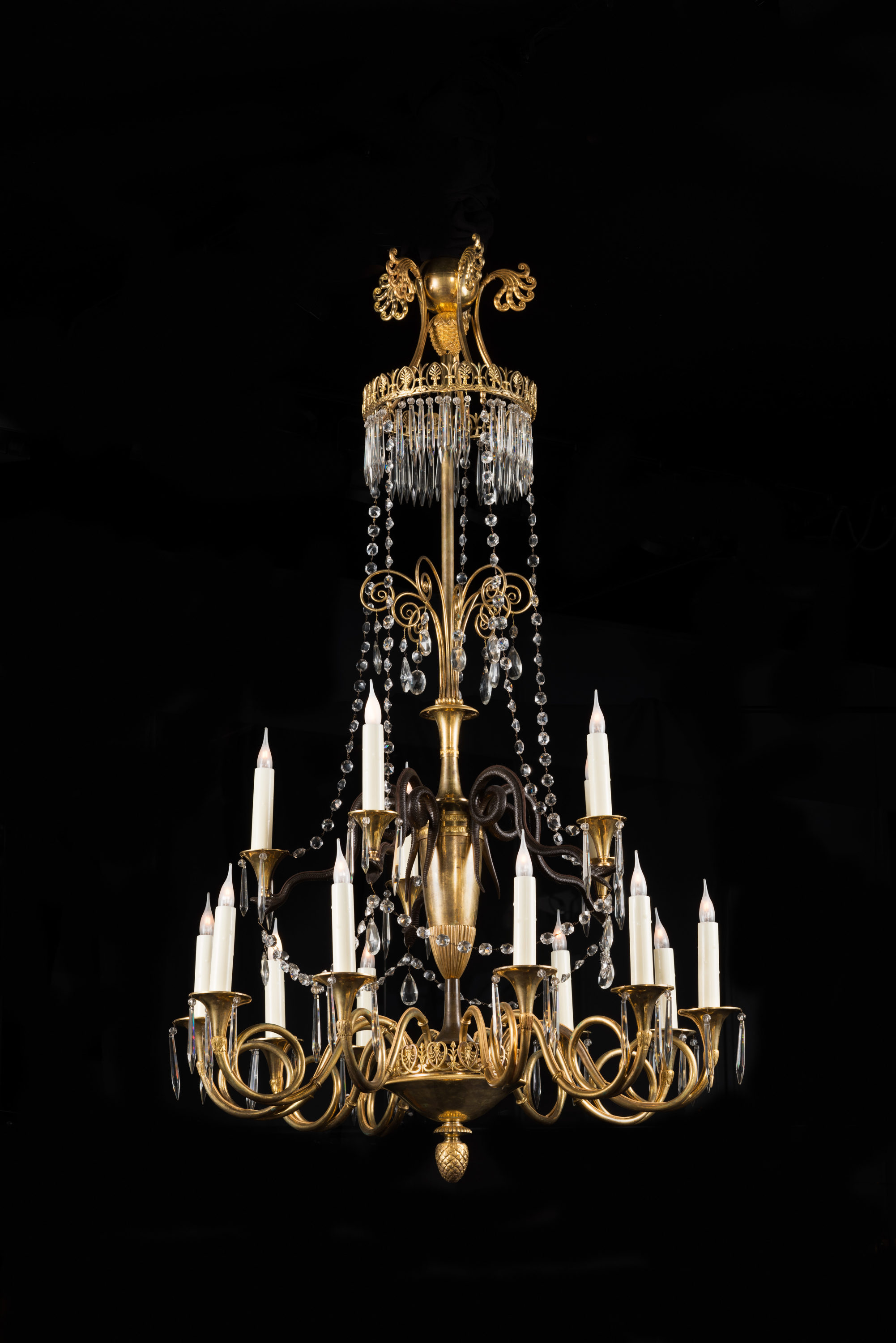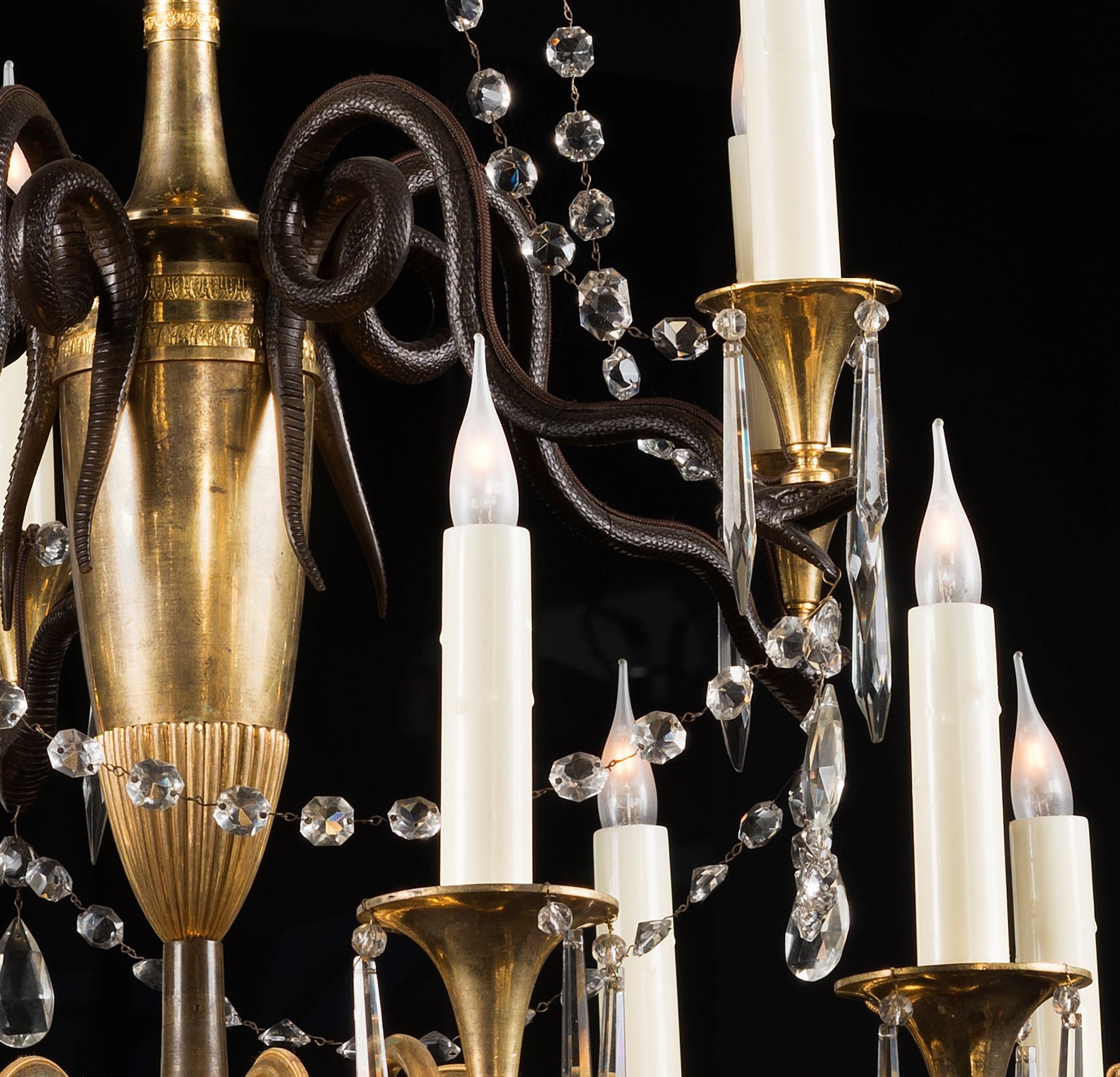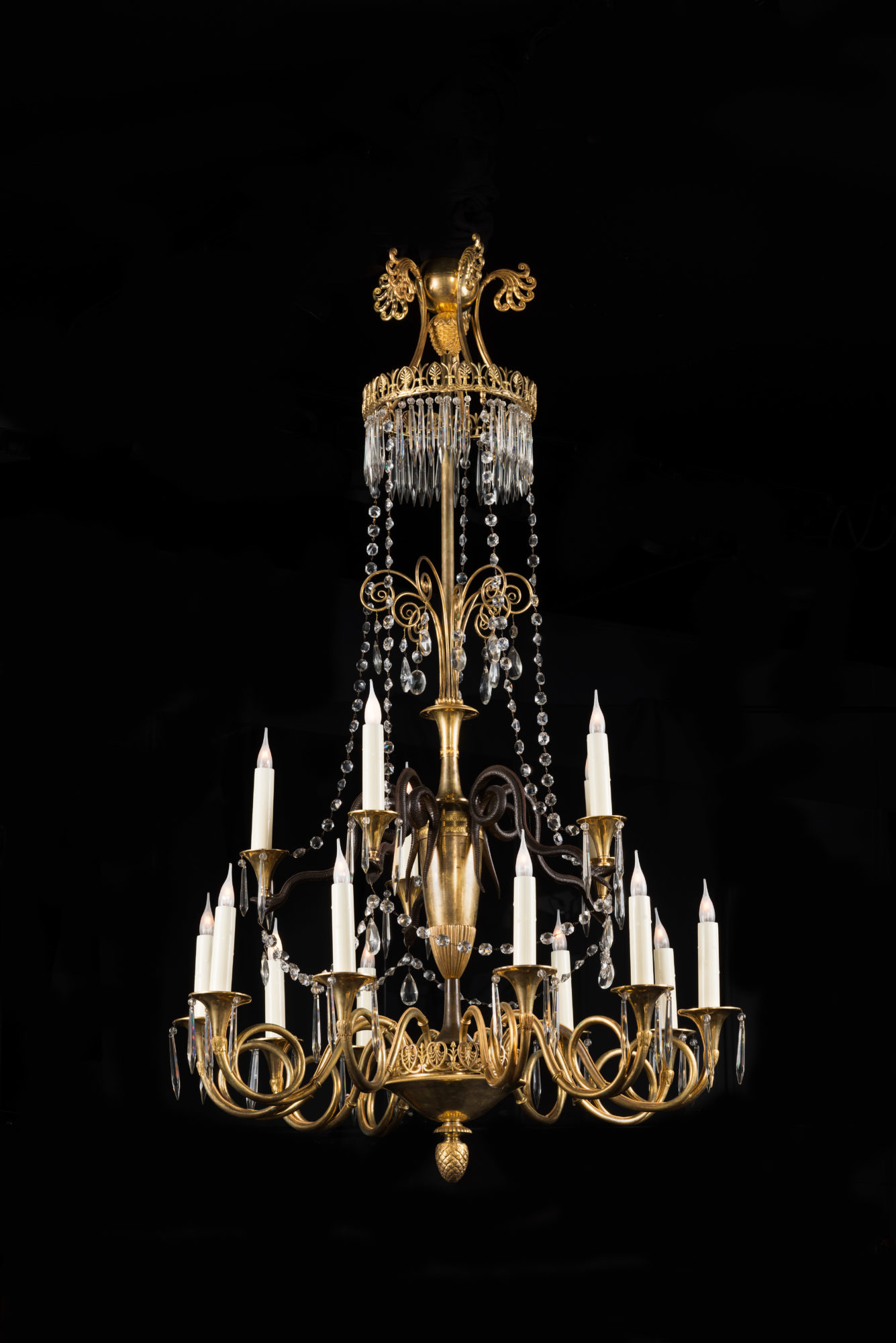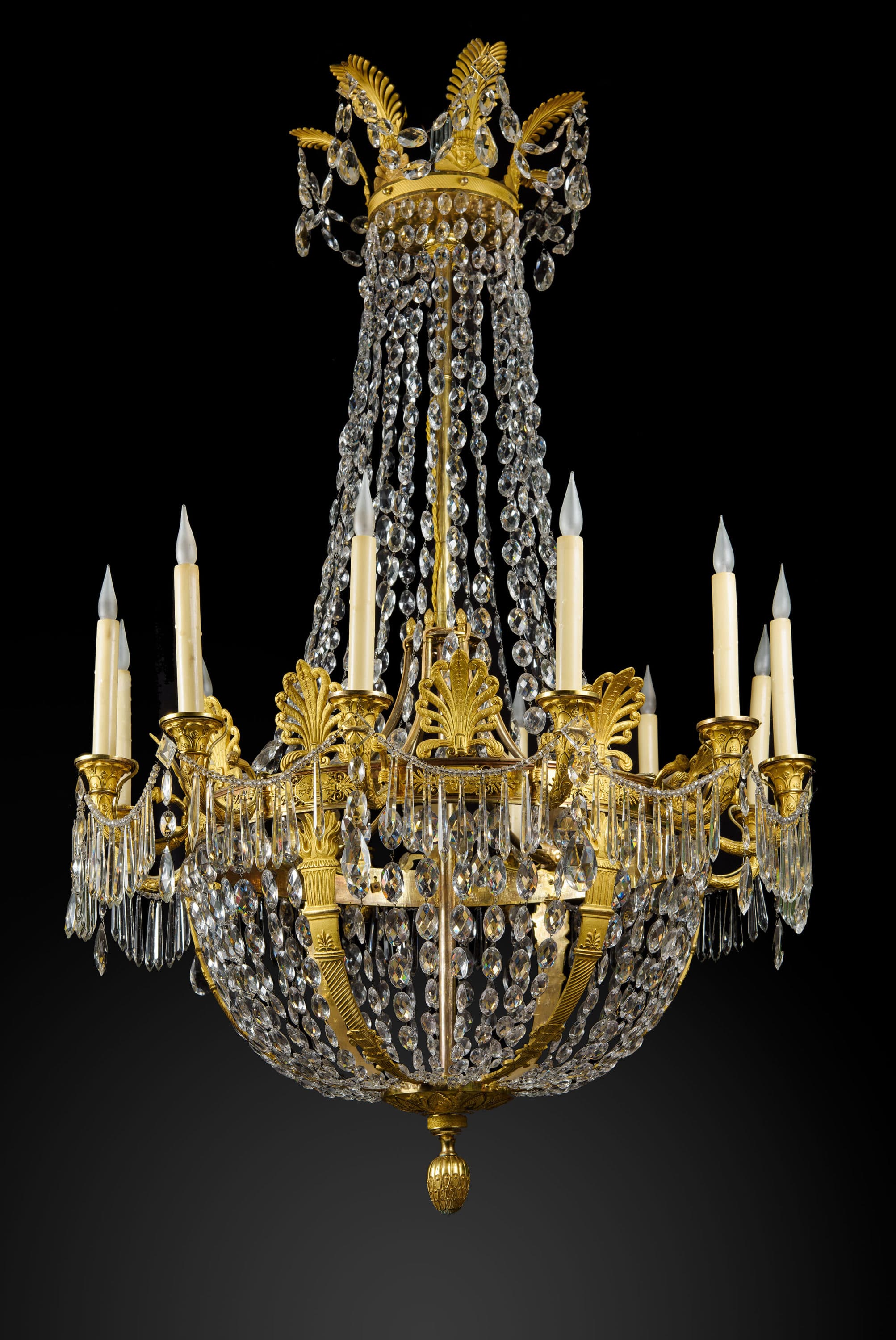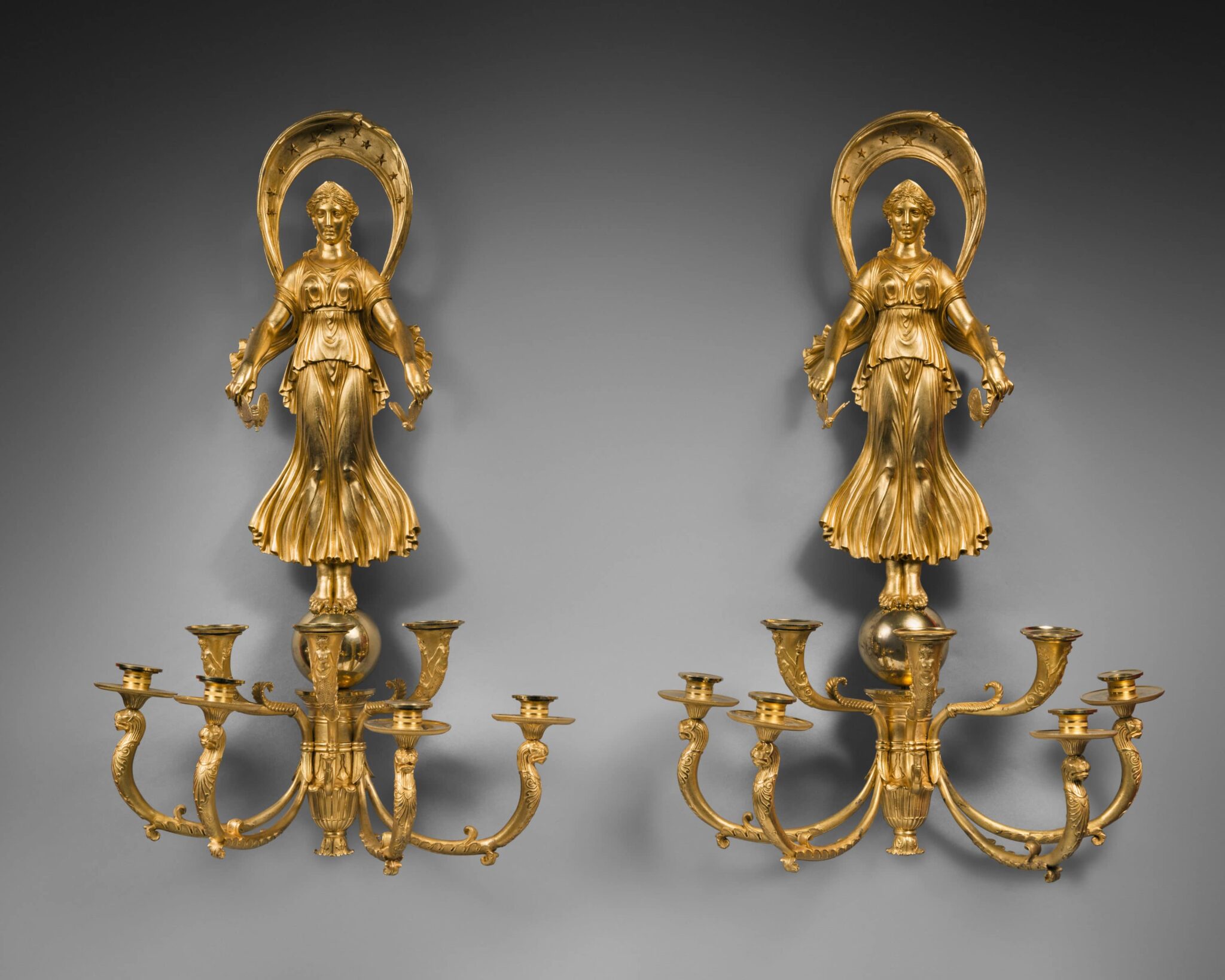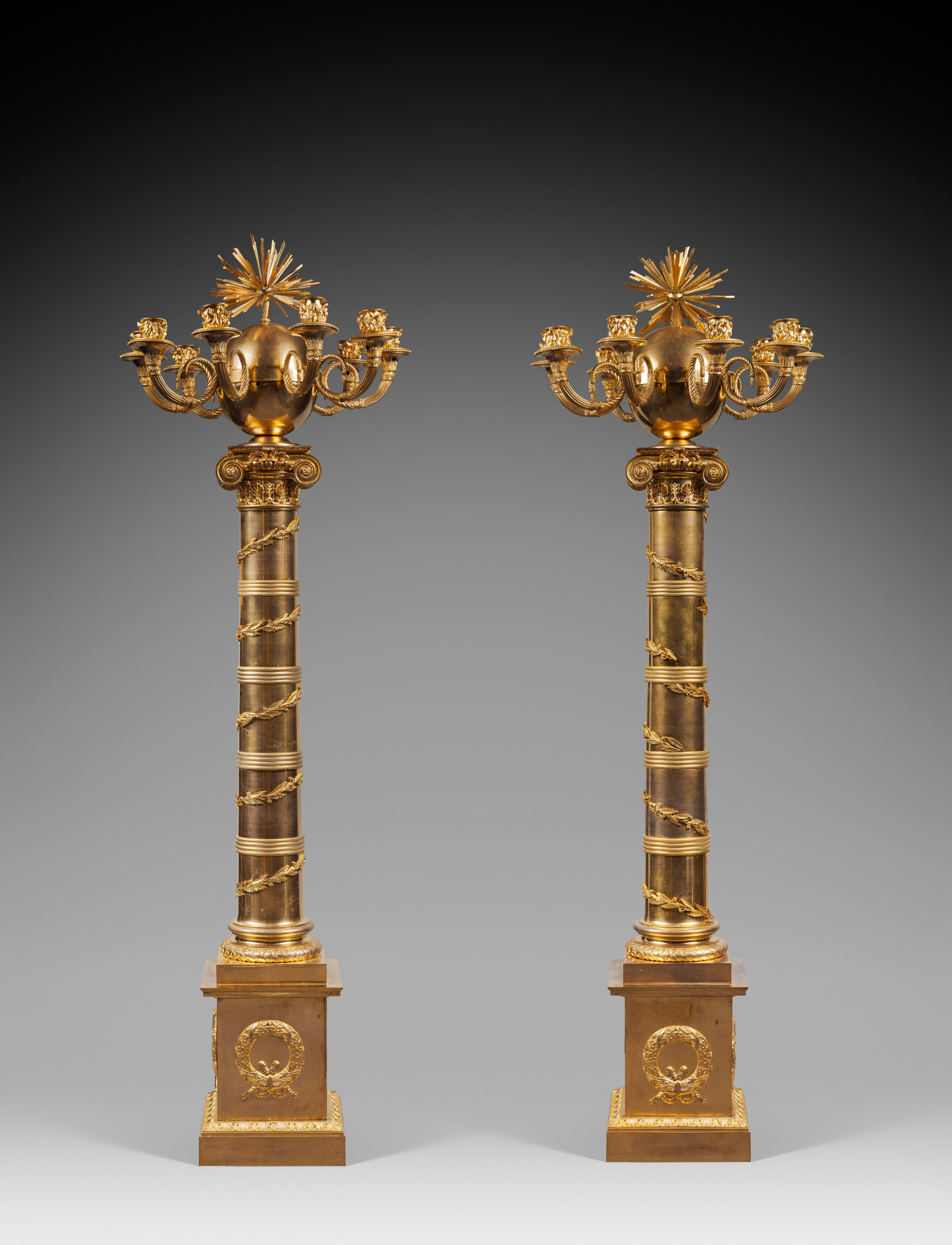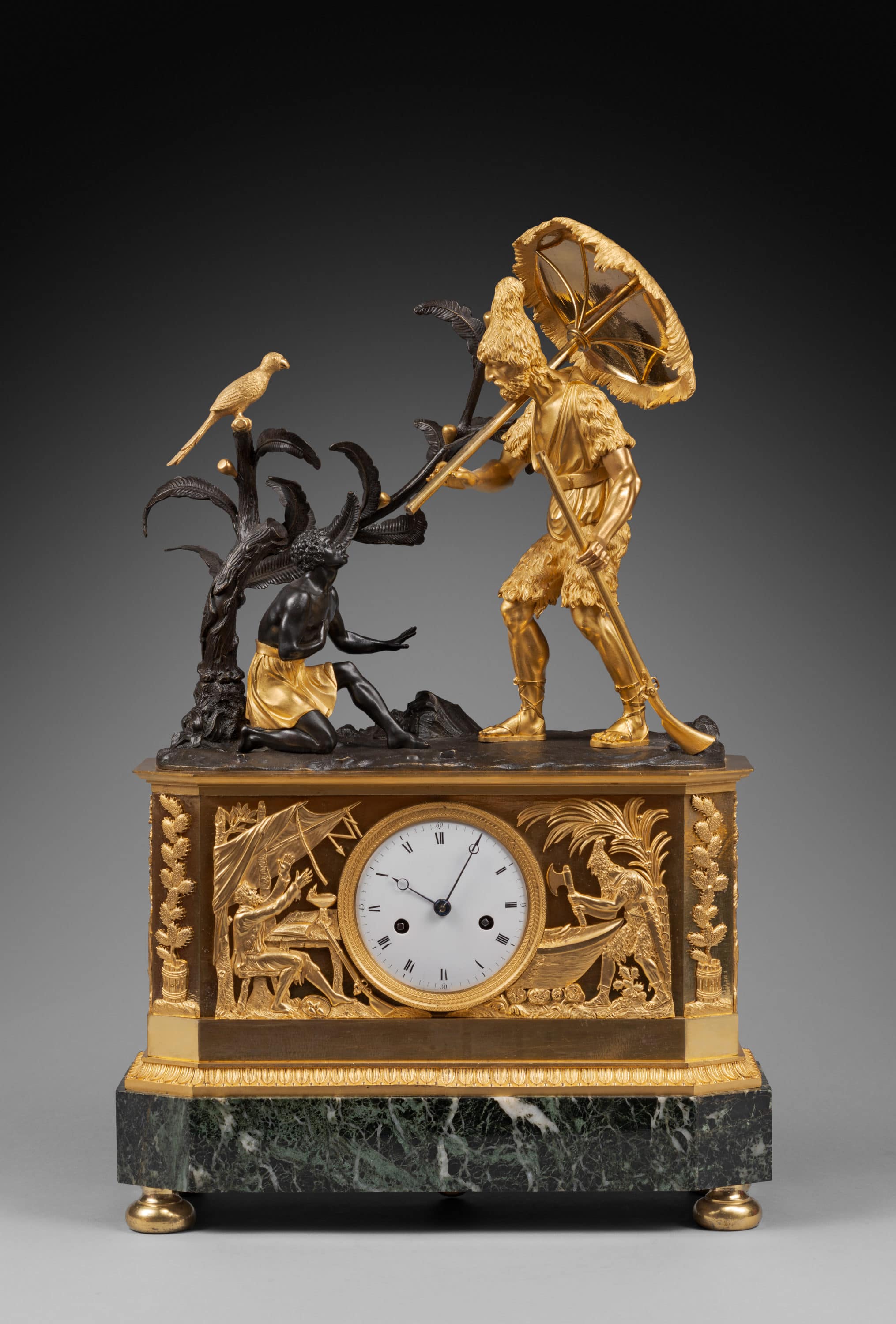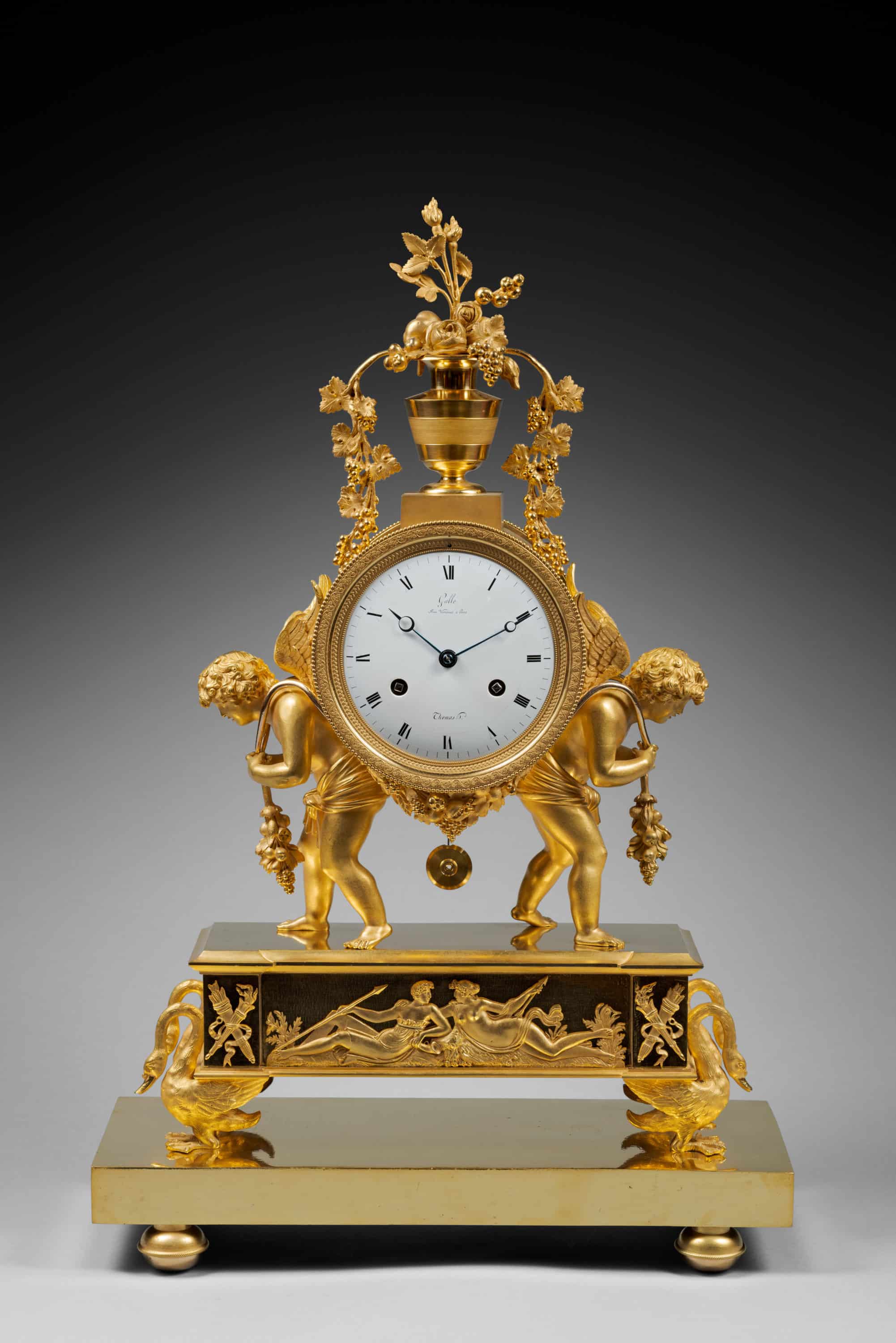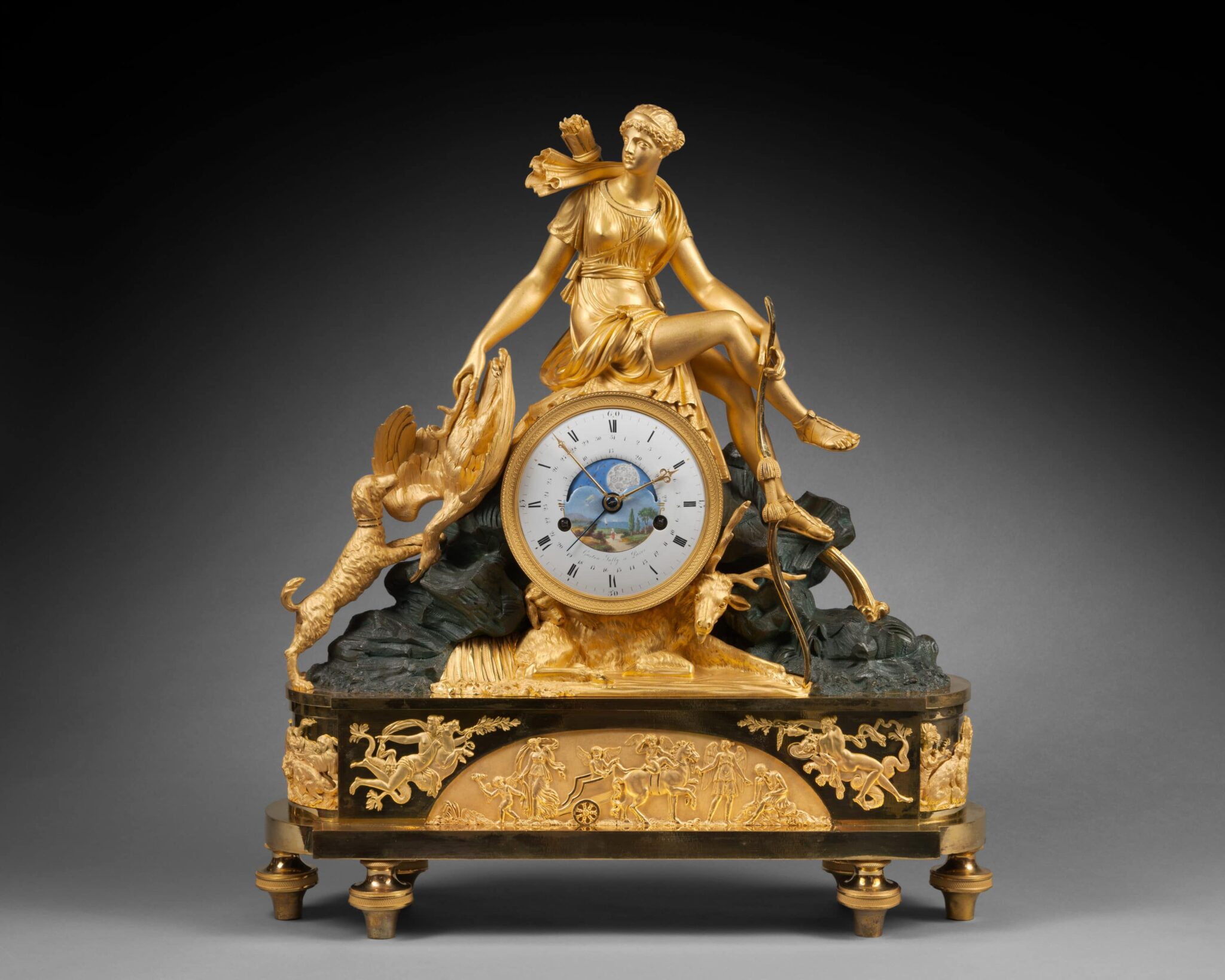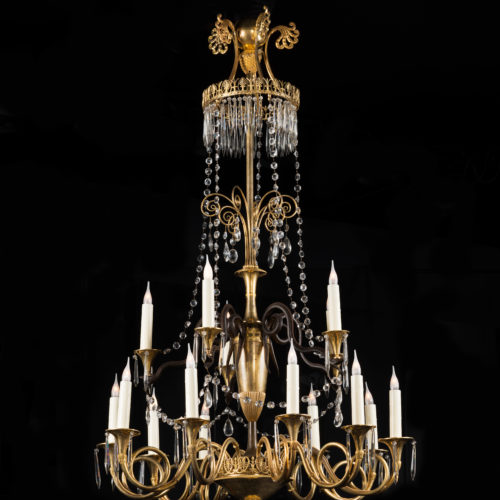Important Fifteen-Light Gilt, Patinated Bronze, and Crystal Chandelier
This important chandelier, made entirely of finely chased patinated and gilt bronze, features a central tapering vase to which are attached six snakes with intertwining tails that support the drip pans; its pedestal is fitted into a wide basin that is decorated with a pierced frieze of alternating palmettes and flowerets that terminates in a pinecone finial and supports nine other trumpet-shaped light branches. The upper portion of the vase supports a stem issuing curved scrolls, which terminates in an upper crown that is adorned with a pierced frieze of flowerets and palmettes. The entire chandelier is elaborately decorated with crystal elements that are cut and faceted, including beads, teardrops, and daggers.
The very unusual design of the present chandelier was inspired by the work of Parisian designers and architects of the early 19th century. The exceptional quality of its chasing and gilding is the basis for our attribution to Claude Galle, one of the most talented Parisian bronziers of the Empire period. Today, only a few similar examples are known. Among them, two examples with twelve light branches, comparable in design but without snakes, were delivered in November 1804 for the Empress’s Salon in Fontainebleau Palace (see J-P. Samoyault, Musée national du Château de Fontainebleau, Catalogue des collections de mobilier, 1-Pendules et bronzes d’ameublement entrés sous le Premier Empire, RMN, Paris, 1989, p. 100, catalogue n° 64). Another model, in patinated and gilt bronze with a tapering vase and faceted crystal elements, is today in the Ecole nationale de Guerre in Paris (illustrated in G. Henriot, Le luminaire de la Renaissance au XIXe siècle, planche 225, figure 3). Another example, also with a central tapering vase and faceted and cut crystal elements, is pictured in S. Chadenet, Les styles Empire et Restauration, Editions Baschet et Cie, Paris, p. 77, fig. 3. One further similar chandelier, which in 1814 adorned the chambers of Pauline Bonaparte in the Hôtel Borghèse in Paris, is shown in J. Nérée Ronfort and J-D. Augarde, A l’ombre de Pauline, La résidence de l’ambassadeur de Grande-Bretagne à Paris, Paris, 2001, p. 51.
Claude Galle (1759 - 1815)
One of the foremost bronziers and fondeur-ciseleurs of the late Louis XVI and Empire periods, Claude Galle was born at Villepreux near Versailles. He served his apprenticeship in Paris under the fondeur Pierre Foy, and in 1784 married Foy’s daughter. In 1786 he became a maitre-fondeur. After the death of his father-in-law in 1788, Galle took over his workshop, soon turning it into one the finest, and employing approximately 400 craftsmen. Galle moved to Quai de la Monnaie (later Quai de l’Unité), and then in 1805 to 60 Rue Vivienne.
The Garde-Meuble de la Couronne, under the direction of sculptor Jean Hauré from 1786-88, entrusted him with many commissions. Galle collaborated with many excellent artisans, including Pierre-Philippe Thomire, and furnished the majority of the furnishing bronzes for the Château de Fontainebleau during the Empire. He received many other Imperial commissions, among them light fittings, figural clock cases, and vases for the palaces of Saint-Cloud, the Trianons, the Tuileries, Compiègne, and Rambouillet. He supplied several Italian palaces, such as Monte Cavallo, Rome and Stupinigi near Turin.
In spite of his success, and due in part to his generous and lavish lifestyle, as well as to the failure of certain of his clients (such as the Prince Joseph Bonaparte) to pay what they owed, Galle often found himself in financial difficulty. Galle’s business was continued by his son after his death by his son, Gérard-Jean Galle (1788-1846). Today his work may be found in the world’s most important museums and collections, those mentioned above, as well as the Musée National du Château de Malmaison, the Musée Marmottan in Paris, the Museo de Reloges at Jerez de la Frontera, the Residenz in Munich, and the Victoria and Albert Museum in London.
Discover our entire collection of rare clocks on La Pendulerie Paris.
